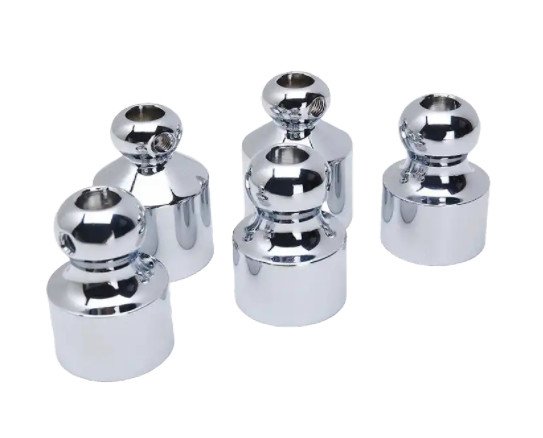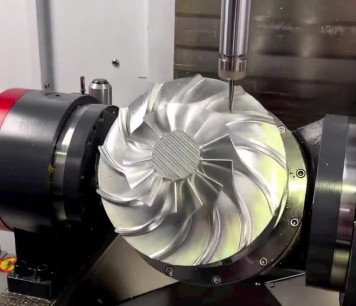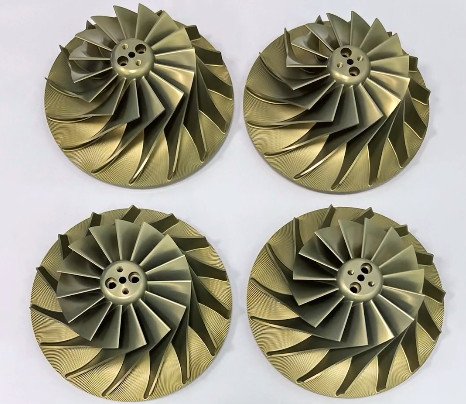This glossary provides precise definitions and technical parameters for surface finishing terms, including advanced processes like micro-arc oxidation, used in manufacturing and engineering. Designed for professionals, it offers systematic explanations and specifications to ensure technical accuracy and practical application. Each term includes detailed descriptions and, where applicable, parameters for clarity in industrial contexts.
Surface Finishing
Surface finishing refers to processes that alter the surface of a manufactured part to achieve specific properties, such as improved appearance, durability, corrosion resistance, wear resistance, or reduced friction. Common techniques include polishing, grinding, sandblasting, plating, coating, anodizing, and painting. The goal is to enhance the functional and/or aesthetic qualities of the surface. It is a critical component of post-processing, targeting the surface properties, while post-processing is a broader term that includes surface finishing and other preparatory steps to complete a part.

Abrasive Blasting
Abrasive blasting propels abrasive materials at high velocity to clean, smooth, or roughen surfaces. Materials like aluminum oxide, glass beads, or steel grit remove contaminants such as rust or paint. Key parameters include:
- Pressure: 40–120 psi (2.8–8.3 bar), based on material and finish.
- Media Size: Grit sizes 12–240 per ANSI standards.
- Nozzle Distance: 6–18 inches (15–45 cm) for optimal impact.
- Blast Angle: 45–90 degrees, typically 60 degrees for uniformity.
Used in metal cleaning and deburring, it requires OSHA-compliant dust and noise controls.
Anodizing
Anodizing forms a protective oxide layer on metals, primarily aluminum, via an electrochemical process. It enhances corrosion and wear resistance. The workpiece is immersed in an electrolyte with an electric current. Parameters include:
- Electrolyte: 15–20% sulfuric acid.
- Voltage: 12–20 volts (Type II); 40–120 volts (Type III, hard anodizing).
- Coating Thickness: 2.5–25 µm (Type II); 25–100 µm (Type III).
- Temperature: 68–72°F (20–22°C).
Common in aerospace and automotive, it meets MIL-A-8625 standards and supports dyeing.
Micro-Arc Oxidation (MAO)
Micro-arc oxidation, also known as plasma electrolytic oxidation, is an advanced electrochemical process that forms thick, ceramic-like oxide coatings on metals like aluminum, titanium, or magnesium. It uses high-voltage discharges in an alkaline electrolyte to create a hard, wear-resistant, and corrosion-resistant layer. Parameters include:
- Electrolyte: Alkaline solutions, e.g., potassium hydroxide or sodium silicate (5–15 g/L).
- Voltage: 300–600 V, alternating or pulsed current.
- Coating Thickness: 20–200 µm, with 50–100 µm typical for wear resistance.
- Current Density: 10–50 A/dm².
- Temperature: 20–40°C, controlled to prevent electrolyte degradation.
MAO is used in aerospace, biomedical, and marine applications for its superior hardness (up to 2000 HV) and adhesion. It is complex, requiring precise control of voltage and electrolyte composition to avoid coating defects.
Electropolishing
Electropolishing removes a thin metal layer, typically from stainless steel, to enhance smoothness and corrosion resistance. The workpiece is the anode in an electrolyte bath. Parameters include:
- Electrolyte: Phosphoric or sulfuric acid-based solutions.
- Current Density: 100–500 A/ft² (1,076–5,382 A/m²).
- Temperature: 120–180°F (49–82°C).
- Material Removal: 2.5–50 µm per cycle.
Used in medical and food industries, it meets ASTM B912 for hygienic surfaces.
Grinding
Grinding uses abrasive wheels to achieve precise dimensions or finishes on hard materials like steel or ceramics. Wheels vary by abrasive (e.g., aluminum oxide) and bond type. Parameters include:
- Wheel Speed: 5,000–12,000 SFPM.
- Feed Rate: 0.001–0.01 inches per pass (0.025–0.25 mm).
- Grit Size: 24–120 (roughing); 150–320 (finishing).
- Coolant: Water- or oil-based.
Critical in toolmaking and aerospace, it requires wheel dressing for consistency.
Passivation
Passivation enhances stainless steel corrosion resistance by removing free iron and forming an oxide layer using nitric or citric acid. Parameters include:
- Solution: 20–50% nitric acid or 4–10% citric acid.
- Temperature: 120–160°F (49–71°C, nitric); 70–140°F (21–60°C, citric).
- Immersion Time: 20–30 minutes (nitric); 4–10 minutes (citric).
Essential in medical and aerospace, it complies with ASTM A967 and AMS 2700.
Powder Coating
Powder coating applies dry powder electrostatically, followed by oven curing, for a durable finish. Powders include polyester or epoxy. Parameters include:
- Powder Type: Thermoset or thermoplastic.
- Coating Thickness: 50–150 µm.
- Curing Temperature: 350–400°F (177–204°C).
- Voltage: 30–100 kV.
Used in automotive and appliances, it emits no VOCs.
Shot Peening
Shot peening induces compressive stresses using spherical media (e.g., steel shot) to improve fatigue resistance. Parameters include:
- Media Size: 0.007–0.039 inches (0.18–1 mm).
- Intensity: 0.004–0.024 inches Almen strip deflection (0.1–0.6 mm).
- Coverage: 100–200%.
- Pressure: 50–100 psi (3.4–6.9 bar).
Used in aerospace for gears and springs, it meets SAE AMS2430 standards.
Vapor Degreasing
Vapor degreasing uses solvent vapors (e.g., trichloroethylene) to clean surfaces, removing oils and contaminants. Parameters include:
- Solvent Temperature: 160–190°F (71–88°C).
- Exposure Time: 1–5 minutes.
- Vapor Pressure: 0.5–1.5 psi (0.03–0.1 bar).
Used in electronics and aerospace, it requires environmental controls.
Plating
Plating deposits a metal layer (e.g., nickel, chrome) via electroplating or electroless methods for corrosion resistance or aesthetics. Parameters include:
- Current Density: 10–100 A/ft² (108–1,076 A/m², electroplating).
- Plating Thickness: 5–50 µm.
- Bath Temperature: 100–140°F (38–60°C, nickel).
Used in automotive and electronics, it adheres to ASTM B633 (zinc) and ASTM B689 (nickel).
Brushing
Brushing creates linear scratch patterns using abrasive belts or brushes for aesthetic or functional finishes. Parameters include:
- Abrasive Grit: 120–320 for stainless steel.
- Belt Speed: 1,000–3,000 SFPM.
- Pressure: 0.5–3 psi (0.03–0.21 bar).
Common in architectural finishes, it produces satin or matte surfaces.
Chemical Etching
Chemical etching removes material using acid or alkaline solutions to create patterns or textures. Parameters include:
- Etchant: Ferric chloride (steel); nitric acid (aluminum).
- Temperature: 100–140°F (38–60°C).
- Etch Depth: 12.5–250 µm.
Used in electronics and decorative applications, it requires precise masking.
Physical Vapor Deposition (PVD)
PVD deposits thin, hard coatings (e.g., titanium nitride) via vaporization in a vacuum chamber. Parameters include:
- Vacuum Pressure: 10⁻³–10⁻⁵ Torr.
- Coating Thickness: 0.5–5 µm.
- Temperature: 200–500°C.
- Deposition Rate: 0.1–1 µm/min.
Used in cutting tools and decorative finishes, it provides high hardness (2000–3000 HV).
Surface Roughness Parameters
Surface roughness quantifies texture, impacting friction and coating adhesion. Key metrics include:
| Parameter | Description | Typical Range |
|---|---|---|
| Ra | Average roughness height. | 0.1–50 µm |
| Rz | Mean roughness depth. | 1–200 µm |
| Rq | Root mean square roughness. | 0.1–50 µm |
Measured per ISO 4287, these affect wear and performance.
Industry Standards
Standards ensure quality and consistency. Key standards include:
| Standard | Process | Description |
|---|---|---|
| ASTM A967 | Passivation | Chemical treatments for stainless steel. |
| MIL-A-8625 | Anodizing | Aluminum anodizing requirements. |
| ISO 4287 | Surface Roughness | Surface texture measurement. |
| SAE AMS2430 | Shot Peening | Shot peening specifications. |
Compliance ensures reliability across industries.
Conclusion
This glossary provides a systematic reference for surface finishing terms, it covers widely used terms but is not exhaustive. It equips professionals with precise, technical information for process selection and application, supported by industry standards. Specific industries (e.g., aerospace, automotive, or medical) may have specialized terms or variations.If you need definitions for additional terms, explanations of specific processes, or examples of applications, please contact us!
Frequently Asked Questions (FAQ)
Why is surface finishing important in manufacturing?
Improved Aesthetics: Enhances the appearance of a product.
Corrosion Resistance: Protects against rust and degradation.
Wear Resistance: Increases durability and extends product lifespan.
Functionality: Can improve lubrication, reduce friction, or prepare surfaces for further processes.
Dimensional Accuracy: Achieves precise tolerances.
What's the main difference between grinding, honing, and lapping?
Grinding: A general abrasive machining process for material removal and achieving a good surface finish.
Honing: A more precise abrasive process, specifically for improving the surface finish and dimensional accuracy of cylindrical surfaces (like the inside of a cylinder).
Lapping: The most precise of the three, used to create extremely smooth, flat, or precisely contoured surfaces with very high dimensional accuracy, often using loose abrasives.
How do "Coating" and "Electroplating" differ?
Coating: A broader term for applying any protective or decorative layer (e.g., paint, powder, plastic film) by various methods.
Electroplating: A specific type of coating process that uses an electric current to deposit a thin metallic layer onto a conductive surface.
When would I use "Abrasive Blasting" versus "Etching"?
Abrasive Blasting: Primarily used for cleaning, roughening a surface for better adhesion, or removing material quickly. It's a mechanical process.
Etching: Used for removing material, often to create patterns, textures, or to chemically clean/prepare a surface. It can be a chemical or abrasive process, but chemical etching is common for precise pattern creation.
How is surface finishing related to post-processing?
Surface finishing is a subset of post-processing. While post-processing covers a wide range of activities to finalize a part, surface finishing specifically focuses on improving the surface’s functional or aesthetic qualities, such as smoothness, texture, or corrosion resistance.
How do I choose the right surface finishing technique?
The choice depends on the material, desired properties (e.g., smoothness, corrosion resistance), application, and budget. Consulting with manufacturing experts or referencing industry standards can help determine the best technique.



